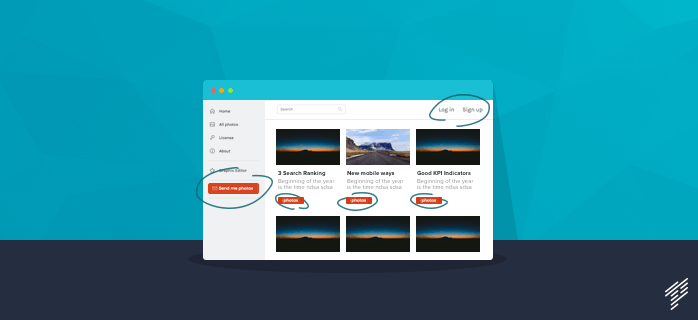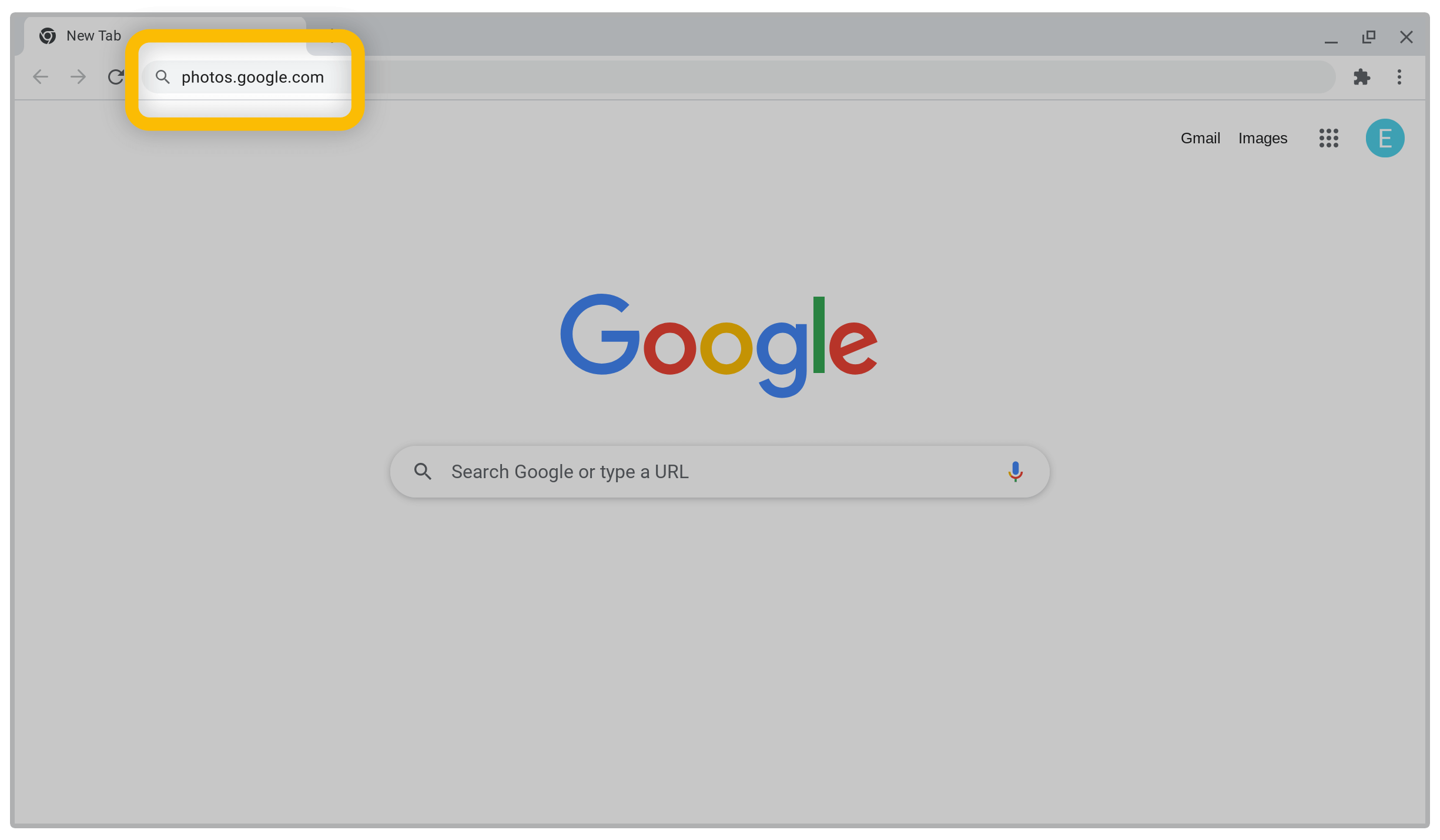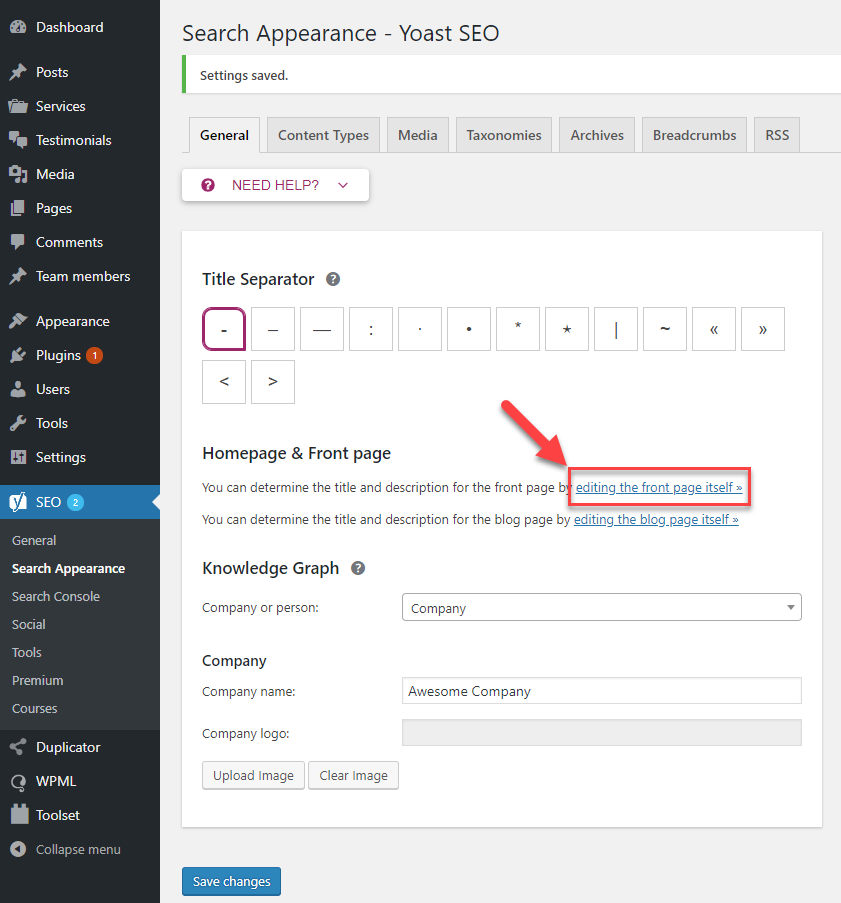
Google will not rank your blog if you only optimize its title. Google's web crawler will search for keywords in your content. Having a basic SEO strategy can make it easier to have your content displayed and index by Google. Another area to focus on when optimizing a blog for SEO is headings. These allow search engines and readers to navigate your content. Use headings to highlight keywords and phrases at the beginning, middle and end of each section.
Meta description
A meta description is an essential part of any SEO blog. Use an organic tone to write it. Your meta description should answer a user's question and highlight your high-quality content. Websites that look like spam are a negative impression on users. If you follow the golden rule of writing for people rather than robots, you will receive more clicks. Here are some helpful tips for writing compelling meta descriptions.
Make it interesting. Use your main keyword as your meta description. Google does not consider your meta descriptions when indexing pages. However, it can be useful to draw attention to your page. The most important thing is to keep your meta descriptions between 140 and 160 characters. You should also include a call for action such as a hyperlink to your website in the description. A great meta description should also include a call to action.
Your meta description can be used to promote your company. It is a great way to catch a user's attention and persuade them to click on the link. High-quality meta descriptions will improve your website's visibility and drive more sales. To encourage users to act, the meta description should end with a call-to-action. Your meta description could be deemed useless if it is too long or contains outdated data.
A meta description, in addition to making your site more readable and easier to read, can help increase click-through rates. Properly used, the meta description can increase organic traffic and improve rankings. Google's search results include a moderately important meta description. Your page may be ranked on page four if your meta description isn't optimized. It is worth adding a meta description to your blog even if it has a low click through rate.
Keywords in title
Focused keywords must be used in the title of SEO blog posts to get the best results. Keywords in your title can help you to determine the direction of your content, and the likelihood it will reach your audience. Search engines categorize web pages based the keywords included in them. These crawlers can use improved technology to assess the quality of content. To improve your article's search ranking, it is important to include relevant keywords in the title.
If you own a gym, use phrases related to crossfit training or crossfit gyms. One keyword should be used per article. Too many keywords can make your article appear spammy to search engines. This will make your content less valuable for your readers. Articles with long-tail keywords rank better than articles with short-tail terms. Using these phrases is a great way to rank higher for a keyword in Google.
The title of your SEO website should not exceed 70 characters. The title tag should include the key phrase as close to its start as possible. You should also use your chosen keyword to convey the benefit of your article. Keyword stuffing is a bad practice. Google warns against keyword-stuffed titles. Therefore, make sure you use a strong focus keyword in your title and make sure that your audience can understand what it will get from your content.
Just putting your keywords in the title is half the battle. The title of your article should be at least 60 characters long and not exceed 575 pixels. You should make sure that your title fulfills the promise made in the title. It should also be easy for people to scan and read. SEO is about planning. You should make sure that your title is as effective and relevant as possible.
Internal links

There are many ways to improve the search engine optimization (SEO) of your website or blog. One of them is to use internal links to direct users to different pages on your website. These links may lead to different products pages or content. This not only improves the user experience but also boosts search performance. It is important to remember that internal links are not like backlinks, and readers are unlikely to find them on their own. This can be achieved by using internal links at the right places.
SEO-friendly SEO strategies include linking to relevant internal pages on your blog. This is a great way to keep readers coming back. Most sites add different styles to their links, so it is important to choose the right words and anchor text when implementing a link strategy. Internal links, aside from using relevant words can increase your reader's attention to your website and help them stay longer. Internal links should point back towards relevant content and offer users a solution.
If possible, the internal links should point directly to the main target keywords. Google is unlikely to penalize you if you use exact-match anchor words. However, make sure that the anchor text matches what you are linking to. It should not be keyword-stuffed. To boost your ranking, do not alter your anchor text. This tactic is not allowed by Google's webmaster policies. This tactic is more effective that you might think.
To optimize internal links, you can create content about topics that are related to your core business. A Columbus landscaping firm generates 390 monthly searches, far less than what is required to find the phrase "best smartphones". Your SEO efforts can be improved by strategically including links to internal pages in your blog posts. A good way to do this is to anticipate the questions that users will have when they browse your website.
Schema markingup
To increase search engine rankings, you can include schema markup in blog posts. To create schema markup, visit Google Structured Data Markup Helper. Enter the URL of the website, choose a category and copy the HTML code. This tool creates a tag manipulator as well as a rendered page in new windows. You can click on individual elements and tag them.
There are three types: NewsArticle (TechArticle), Microdata (Microdata). Each type can have a different set of flags, depending on the content of the post. NewsArticle can be used for articles that are current in nature. TechArticle may have flags that indicate the technical content of the article. An example is a HowTo article. These flags could indicate the technical level of its author, the software used and any dependencies.
Google has made it easier to create schema. You can tag data to see similar content in search results. Schema markup is highly recommended for blog posts in order to increase brand awareness. If you are a small business with a local address, schema can be used to advertise your business. The schema can also be used to promote your business and events. The benefits of using schema markup in your SEO blog post are numerous. These links will help you to decide what schema markup to use.
You can also use schema to optimize content. The markup is used to help search engines identify the elements of a site. Schema markup can help you identify ingredients, instructions, and ketogenic diets when you blog about food. Schema is also useful for reviewing blogs. In general, the more relevant content you have to a user’s query, the higher your search engine rankings.
Copyright for image

It is crucial to verify the permission of any images you plan on using for your SEO blog. Many PR agencies don't allow images to be shared from their websites. You may not have the right to use these images. Contact them to learn who owns the image. Most times the owner is happy to give permission for you to use the photo. These tips will help you comply to the law.
Google images should be avoided. Before you use an image on your blog, contact the original owner. Google allows you to search for images, but you have to obtain permission to use them. If you have difficulty finding the image required, you can ask permission to visit the page that it is hosted. This will ensure you're not violating a copyright. Image copyrights could make all the difference between a successful SEO blog or a website that is removed from search engines.
Check the copyrights on any image you wish to use in your blog. It's illegal to use images from Google Images. You are discrediting the artist of the image and could face legal consequences if you steal images without permission. If permission is granted by the owner, public domain and fair-use photos can be used. You can consult an intellectual property lawyer if you are still unsure.
Images used for SEO blogs must be of the same author and attribute. You are more likely than not to use humorous photos for SEO purposes. But you should always verify the licence terms. Some images can be freely used, but some restrictions apply. Do not use images without permission from the author. If they're not royalty-free, you may be in violation of the copyright. You may also be sued, which could lead to a large amount of damages.
FAQ
How Long does it take for PPC Advertising results to show up?
Paid searches take longer than organic results, because they have no natural flow. People expect to see the most relevant results when they search for something. Paid searches must be more persuasive to convince people they are worth the money.
What are the different SEO strategies?
There are three types of SEO strategies: search engine optimization (SEO), Social Media Optimization (SMO) and Pay-per-click Advertising (PPC).
SEO is the process of optimizing content for keywords using text formatting, HTML codes, and other features.
This helps make sure your site appears higher on search results pages.
Meanwhile, social media optimization (SMO) involves optimizing your website for social networks such as Twitter, Facebook, and Google+.
These can help you build your online reputation and increase traffic to your site when people search for related topics.
PPC ads also appear at the top Search Results Pages, showing relevant products & services.
Google paid search advertisements are the most well-known type of PPC advertisement. These ads cost money, but are extremely effective.
However, several other forms of PPC advertising are available - including display ads, video ads, and sponsored posts.
What Does SEO Mean For Small Businesses?
Today, small businesses face the challenge of competing against large corporations that spend millions advertising. Search Engine Optimization allows small businesses to leverage the same marketing power as larger companies without breaking the bank.
How much does SEO cost?
SEO is a long-term investment and you will not see immediate returns. But it's important that you remember that more people will find your website, the more likely it will rank higher in search engines.
Pricing for each service is affected by many factors including location, price, market size, competition, and keyword competitiveness.
What is an SEO strategy?
Content is the most important aspect of any website. Search engines won't rank your site high enough if you don't include relevant and helpful information.
SEO campaigns optimize your website by obtaining links from other sites back to yours. It also includes social marketing optimization. This refers to using Twitter, Facebook or LinkedIn to drive traffic to your site and increase brand recognition.
These will increase your website's visibility and help you rank higher in search engines. An SEO campaign's main focus is building quality links back to your site so that Google knows that your website is valuable.
Statistics
- A 62.60% organic traffic boost to that page: (backlinko.com)
- : You might have read about the time that I used The Content Relaunch to boost my organic traffic by 260.7%: (backlinko.com)
- 93%of online experiences today begin on search engines. (marketinginsidergroup.com)
- Which led to a 70.43% boost in search engine traffic compared to the old version of the post: (backlinko.com)
- 64% of marketers actively create SEO campaigns because they help hit multiple key performance indicators (KPIs), including increasing traffic, helping your site rank for relevant keywords, improving your conversion rate, and much more. (semrush.com)
External Links
How To
How do you create your first blog site?
It's simple! WordPress is a wonderful tool to help you create a blog. You can edit the appearance of your blog by creating themes, changing fonts, colors, or customizing it. They can also add plugins that allow them to automatically change certain aspects of their website depending on visitor activity.
There are many free templates you can download from WordPress.org. You also have the option to purchase premium templates. Premium templates come with additional features such as extra pages, extra plugins, and advanced security.
Once you have downloaded your template you will need a free account to upload your files, and then to manage your blog. Many hosting companies offer free accounts. However there are limitations to how much space you can have, how many domains your site can host, and how often you can send emails.
If you wish to use more than one domain, you will need to purchase additional email addresses. Some hosts charge a monthly fee for this service.
It's easy to wonder why someone would pay to host a blog online, especially if you're just starting out with blogging. Hosts offer unlimited storage space. This means that files can be saved indefinitely and won't be lost if they're accidentally deleted.
Many hosts allow users to host multiple domains. This means you can have multiple sites with the same hosting package. It is possible to avoid multiple email accounts by registering for one interface, allowing you to manage all of your sites from the same place.
Some hosts have social media sharing buttons built into their dashboards. This allows visitors to quickly and easily share content across the internet.
Many hosting providers offer tools that allow you to manage your blog. You can check the performance stats for your site, view how many visitors each article has received, and even compare your traffic to other blogs.
These tools will make managing your blog much easier and more efficient. It's worth looking at before you decide on a hosting plan.
To sum up:
-
Select a topic that is relevant to your business.
-
Create engaging content;
-
Optimize your site using SEO techniques;
-
Promote your site using social media channels;
-
Keep an eye on your statistics to see if you can make any changes.
-
Remember to update your blog regularly.
You should create high-quality content, market it effectively, and monitor its success.